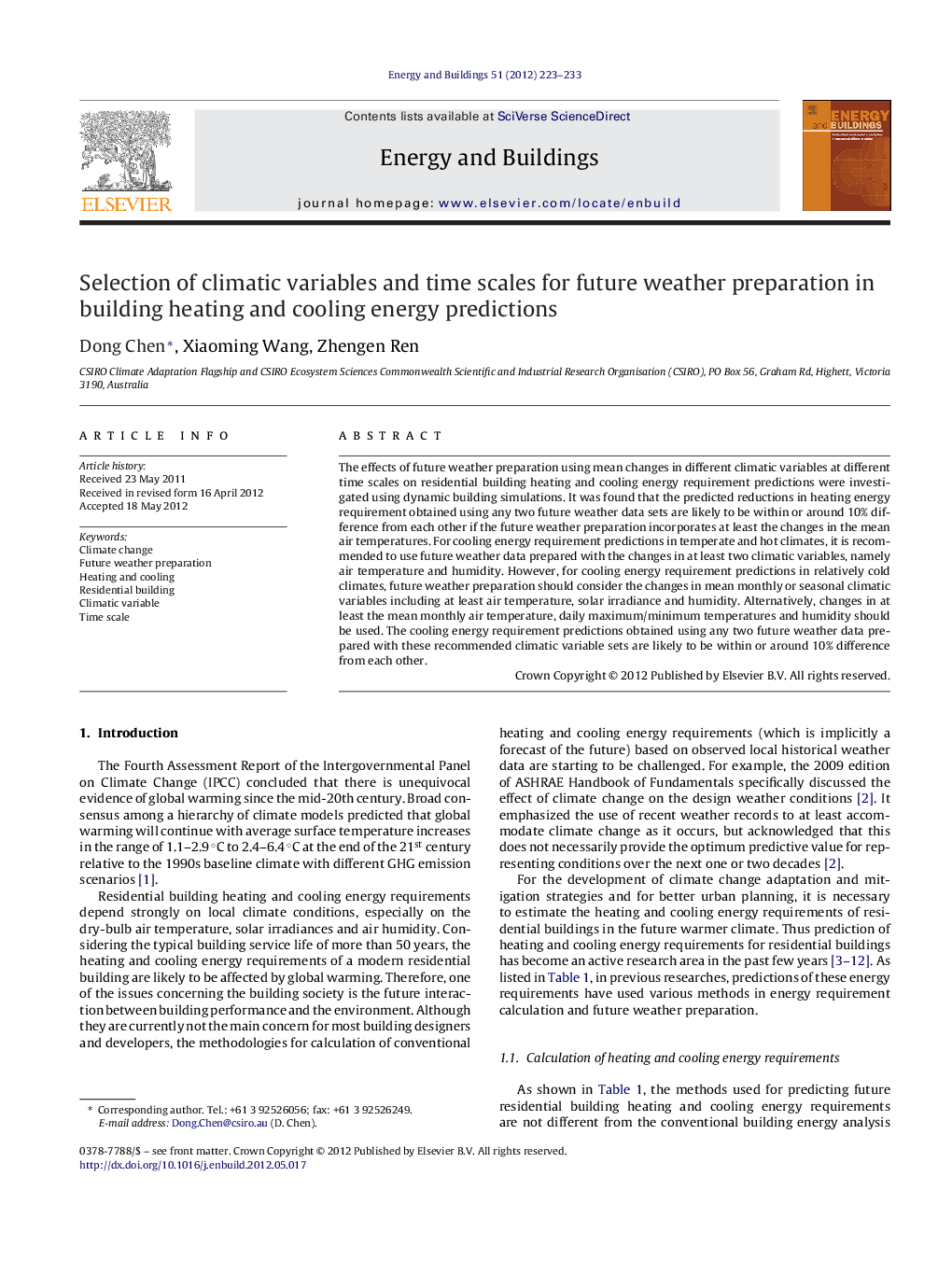| Article ID | Journal | Published Year | Pages | File Type |
|---|---|---|---|---|
| 263621 | Energy and Buildings | 2012 | 11 Pages |
The effects of future weather preparation using mean changes in different climatic variables at different time scales on residential building heating and cooling energy requirement predictions were investigated using dynamic building simulations. It was found that the predicted reductions in heating energy requirement obtained using any two future weather data sets are likely to be within or around 10% difference from each other if the future weather preparation incorporates at least the changes in the mean air temperatures. For cooling energy requirement predictions in temperate and hot climates, it is recommended to use future weather data prepared with the changes in at least two climatic variables, namely air temperature and humidity. However, for cooling energy requirement predictions in relatively cold climates, future weather preparation should consider the changes in mean monthly or seasonal climatic variables including at least air temperature, solar irradiance and humidity. Alternatively, changes in at least the mean monthly air temperature, daily maximum/minimum temperatures and humidity should be used. The cooling energy requirement predictions obtained using any two future weather data prepared with these recommended climatic variable sets are likely to be within or around 10% difference from each other.
► Future weather data preparation with proper climatic variables and time scales. ► For heating, at least the changes in the mean air temperatures should be included. ► For cooling, the changes in air temperature and humidity should be included. ► For cooling in cold climates, changes in multiple climatic variables are required.
